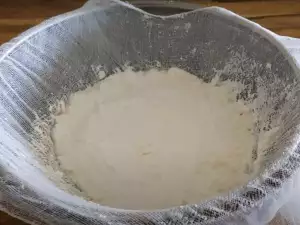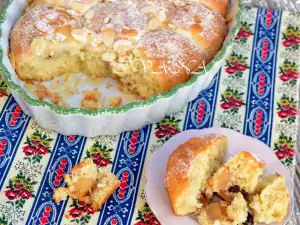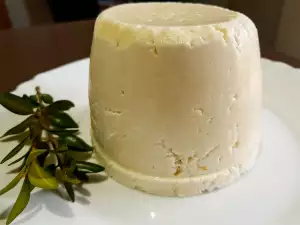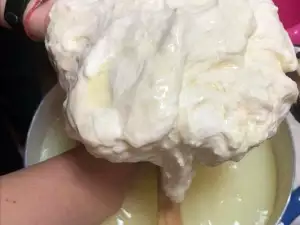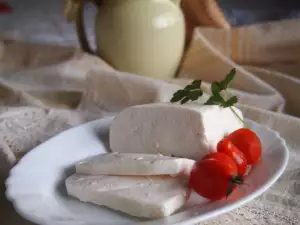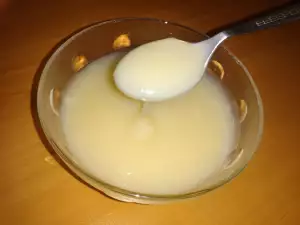How to make
Real ricotta made from whey. It differs from others like it, because it has strict technology.
The liquid is heated to 180°F (80 degrees) and should not boil, resulting in a more creamy and slightly grainy substance, not as hard and porous as cottage cheese, for example.
Not every household can get large quantities of whey, from which it will extract a little ricotta (from 5 liters you would get about 200-300 g, depending on the quality of the milk, from which the whey is made).
Such quantities are usually available in the dairies, where yellow cheese is prepared and they utilize the residual substance from its production in the extraction of another product.
That is why it is believed, that homemade ricotta can be made from pure milk, with added citric acid.
Yes, the result is always good and the amount of ricotta, that comes out is much more, but this is not ricotta in the true sense, but rather could be called deconstructed fresh cheese.
You decide which of the two ways is best for you.
I personally buy 1.3 gal (5) or 2.6 gal (10 liters) of fresh sheep's milk, necessarily homemade or from a small farm and freshly milked.
I make homemade yellow cheese and white cheese from it and I use the separated whey for ricotta. This is how 100% of the milk is utilized and we have real natural and incomparably delicious products on our table.
I leave the whey to stand overnight and the fermentation processes in it are activated. Then I heat it to 80-90 degrees and it slightly lumps up.
This is when it is made from yellow cheese, because it already contains citric acid, but if yours is made from white cheese, it is not added there and you will have to add salt and a teaspoon of acid - lemon juice or citric acid.
Stir and pour it into a large strainer with a piece of gauze on it. This leaves exactly this creamy, slightly grainy ricotta on the surface. The draining time depends on how thick you want it to be.
In the second case, when we're using fresh milk to make a similar ricotta, we follow a similar technology as when making yellow cheese, with small differences.
Heat the milk without boiling it, add salt and lemon juice and stir. When it lumps up, immediately pour it into a strainer covered with gauze and leave the liquid to drain.
The lumped up product is your so-called ricotta. If you leave it in the gauze for a long time, it will become more like yellow cheese, so the first option is the one that is closer to the authentic ricotta.
In the photos, I have presented you with the first option. Try it yourself and share the result.
* Note: Do not add salt to the recipe if you want to prepare creams for cakes and desserts from your homemade ricotta.

